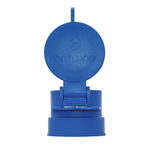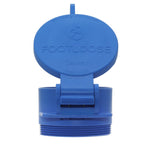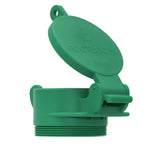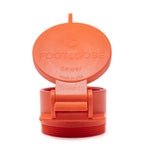You have no items in your shopping cart.
Have you ever been driving on an unfamiliar road and seen the vehicle in front of you swerve for no discernible reason—only to hear the loud clunk a few moments later as your car runs over a sunken manhole? It’s one of those little annoyances that may lead you to ask yourself why the powers that be don’t just make manhole covers flush with the road. It would make more sense, right?
As it turns out, there are good reasons—some intentional and some unintentional–why manhole covers are a few inches above or below the road’s surface.
What are manholes doing on the road, anyway?
First off, why are manholes placed where vehicles will hit them? It might seem that it would make more sense to locate them out of the way of traffic, but there’s a reason manholes are often accessed via a street or road.

Pedestrian safety
Historically, manholes have provided access to underground utility systems. At one time, they were primarily to access sewer systems, but as technology and civilization have grown, they began providing access to gas, electric, water, and telephone lines as well.
One reason manholes are placed in the road is to keep sidewalks open and safe for pedestrians and to protect them from noxious fumes from an open manhole. For those manholes that don’t require a manhole key, placement on a roadway also makes it less likely that someone will remove the cover of a manhole. The roadway is also a more central placement, which gives more equal access to utilities to customers on both sides of the street.
Providing distance between utilities
It’s not recommended that you open up a manhole and climb down to see what’s in there. But if you did, you’d find utility systems and lines. Often, utility systems such as electrical and sewer need to be a certain distance from each other for safety reasons. Additionally, when workers go in to make repairs, having the lines overlap would make them hard to access. Putting manholes in the street provides a bigger underground space to separate lines and make repairs easier.
Sometimes the street or road overtook them
In the past, manholes were sometimes installed off the road. But as populations grew and roads were widened from two lanes to four or more, the manhole was swallowed up by the encroaching roadway. Yes, the manholes could be relocated. But when cities weigh the cost of relocation against the inconvenience of you bumping your head or damaging your tires while driving, they usually go for the option that saves money.
And, originally, the manhole you hit this morning was probably in the middle of the lane, where cars could straddle it. But again, reconfiguring roadways to have additional lanes or bike lanes may have moved the center of the lane, putting the manhole more directly in your path.
OK, but couldn’t they at least be flush with the road?
As it turns out, most times, manhole covers were built to be flush with the road but shifted over time to be above the surface or below.
They weren’t designed as holes your tires bump into!
That same jolt you feel when your vehicle goes over a manhole is tough on the manhole, too! Sometimes, manholes that were built to be flush settle over time. Kevin Danen is a sewer operations engineer with the City of Minneapolis, and he notes that manhole positions can also shift as a result of sand and salt degrading their placement, causing them to sag or sink.
Or maybe they were designed as holes your tires bump into
If you drive in an area with harsh winters, you may be driving over manholes that were designed to be slightly below the surface of the road. That’s because icy weather can cause the manholes to protrude and damage snow plows. In building them below the surface of the road, the hope is that their protrusion will be minimized.
Sometimes manholes are higher than the road
Over time, most manholes sink and become potholes for you to navigate around when you notice them in time.

But some roads have a definite slope to them to allow water to run off. On such roads, manholes are sometimes more level with the middle part of the lane but protrude toward the lane’s edge where the slope is greater.
Repairs face challenges
Why aren’t manholes above or below the road repaired to be flush with roadways? When roads are resurfaced, the crews can raise or lower manhole covers to be even with the road, but their budget and work orders don’t always include adjusting manholes. As the Road Wizard of Ada County, Idaho notes in his blog, the cost of re-leveling a manhole is about $1,000.
Even if road crews are authorized to repair manhole placement, the collars that they use to adjust the level may not make it possible to get the manhole exactly level with the road. Repairs are also made more difficult by red tape among government agencies; the agency overseeing the road repair has to coordinate with the agency responsible for the manhole.
So, the next time you experience that unpleasant clunk when you hit a manhole cover, take comfort in knowing it’s not the fault of those who design, build, and repair the roadway. There’s probably no diabolical road engineer in an office gleefully imagining ways to cause damage to your car from a cleverly-placed manhole—just someone who, much like you, is dealing with the challenges of increased traffic and a limited budget. Want to learn more?









